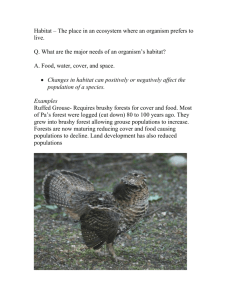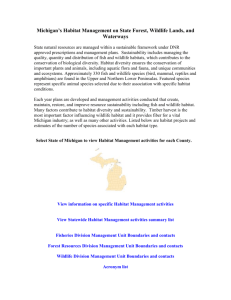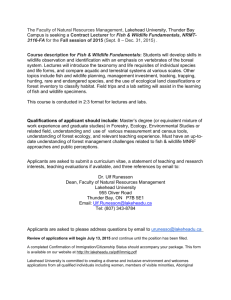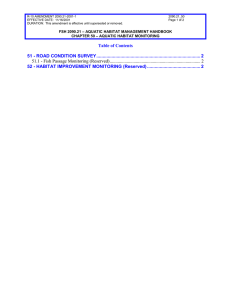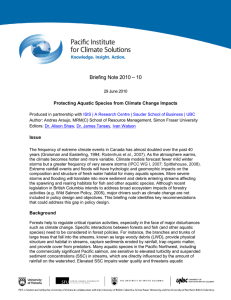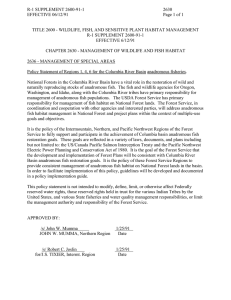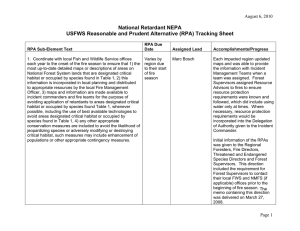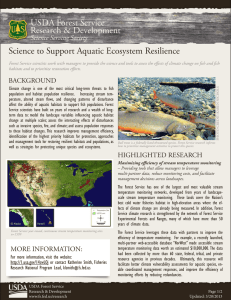Other Legal Highlights
advertisement
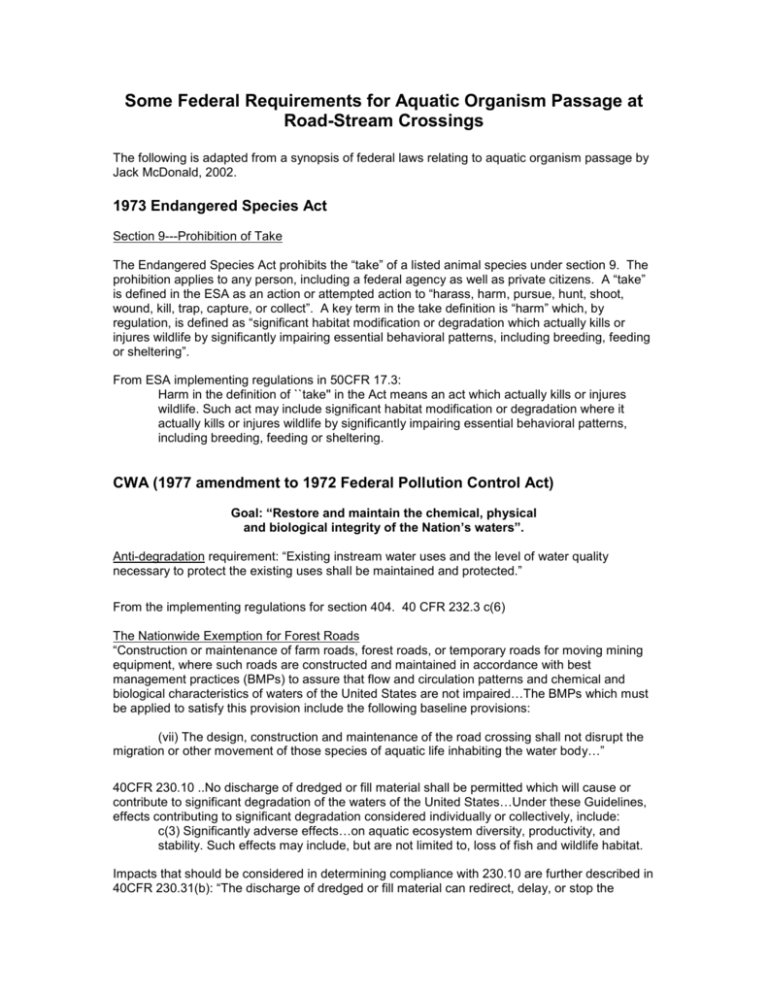
Some Federal Requirements for Aquatic Organism Passage at Road-Stream Crossings The following is adapted from a synopsis of federal laws relating to aquatic organism passage by Jack McDonald, 2002. 1973 Endangered Species Act Section 9---Prohibition of Take The Endangered Species Act prohibits the “take” of a listed animal species under section 9. The prohibition applies to any person, including a federal agency as well as private citizens. A “take” is defined in the ESA as an action or attempted action to “harass, harm, pursue, hunt, shoot, wound, kill, trap, capture, or collect”. A key term in the take definition is “harm” which, by regulation, is defined as “significant habitat modification or degradation which actually kills or injures wildlife by significantly impairing essential behavioral patterns, including breeding, feeding or sheltering”. From ESA implementing regulations in 50CFR 17.3: Harm in the definition of ``take'' in the Act means an act which actually kills or injures wildlife. Such act may include significant habitat modification or degradation where it actually kills or injures wildlife by significantly impairing essential behavioral patterns, including breeding, feeding or sheltering. CWA (1977 amendment to 1972 Federal Pollution Control Act) Goal: “Restore and maintain the chemical, physical and biological integrity of the Nation’s waters”. Anti-degradation requirement: “Existing instream water uses and the level of water quality necessary to protect the existing uses shall be maintained and protected.” From the implementing regulations for section 404. 40 CFR 232.3 c(6) The Nationwide Exemption for Forest Roads “Construction or maintenance of farm roads, forest roads, or temporary roads for moving mining equipment, where such roads are constructed and maintained in accordance with best management practices (BMPs) to assure that flow and circulation patterns and chemical and biological characteristics of waters of the United States are not impaired…The BMPs which must be applied to satisfy this provision include the following baseline provisions: (vii) The design, construction and maintenance of the road crossing shall not disrupt the migration or other movement of those species of aquatic life inhabiting the water body…” 40CFR 230.10 ..No discharge of dredged or fill material shall be permitted which will cause or contribute to significant degradation of the waters of the United States…Under these Guidelines, effects contributing to significant degradation considered individually or collectively, include: c(3) Significantly adverse effects…on aquatic ecosystem diversity, productivity, and stability. Such effects may include, but are not limited to, loss of fish and wildlife habitat. Impacts that should be considered in determining compliance with 230.10 are further described in 40CFR 230.31(b): “The discharge of dredged or fill material can redirect, delay, or stop the reproductive and feeding movements of some species of fish and crustacea, thus preventing their aggregation in accustomed places such as spawning or nursery grounds and potentially leading to reduced populations.” 1976 National Forest Management Act The Act includes requirements for forest planning procedures that keep desired aquatic organisms well distributed throughout their range, protect diversity generally, and protect against blockages of water courses and other impacts to fish habitat. Section 1604(g)(3)(B): (land management guidelines must) “provide for diversity of plant and animal communities.” From the implementing regulations: 36 CFR 219.27(g) “Management prescriptions, where appropriate and to the extent practicable, shall preserve and enhance the diversity of plant and animal communities, including endemic and desirable naturalized plant and animal species, so that it is at least as great as that which would be expected in a natural forest expect biodiversity in the managed forest to be at least as great as that in a natural forest. 36 CFR 219.27(e): “No management practices causing…blockages of water courses, or deposits of sediment shall be permitted within these (riparian) areas which seriously and adversely affect water conditions or fish habitat.” 36 CFR 219.19 “Fish and wildlife habitat shall be managed to maintain viable populations of existing native and desired non-native vertebrate species…a viable population (is) one which has the estimated numbers and distribution of reproductive individuals to ensure its continued existence is well distributed…habitat must be well distributed so that those individuals can interact with others…”.



